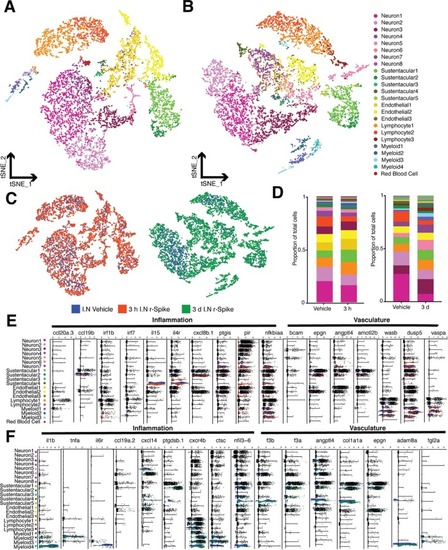
ScRNA-Seq of zebrafish OO reveals changes in cellular landscape due to intranasal SARS-CoV-2 S RBD protein delivery. (A-B) Cellular composition of the zebrafish OO visualized using t-distributed stochastic neighbor embedding (tSNE) of vehicle treated, 3 h and 3 d post-intranasal delivery of SARS-CoV-2 S RBD (r-Spike). Individual single-cell transcriptomes were colored according to cluster identity. tSNE plots were generated in Seurat and identified 20 and 22 distinct cell clusters, respectively. (C) tSNE plots of zebrafish OO cell suspensions colored according to treatment. (D) Bar plots showing the proportion of cells belonging to each cluster in each treatment group. Statistical analysis for changes in cell population proportions is in supplemental tables 3 and 4. (E-F) Violin plots showing expression of selected markers of inflammation and vasculature remodeling in the 3 h SARS-CoV-2 S RBD (orange) versus vehicle treated (blue) and 3 d SARS-CoV-2 S RBD (green) versus vehicle treated (blue) zebrafish OO obtained by scRNA-Seq. All represented genes were significantly differentially regulated between treatments (adjusted P-value-adj <0.05).
|

